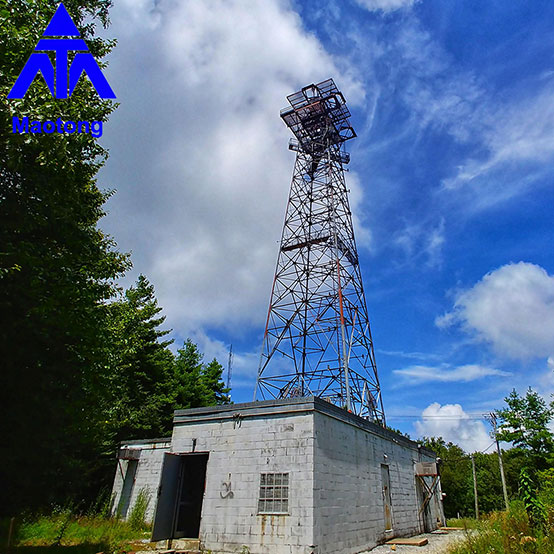Key Features of Single Monopole Towers
2024-06-13
A single monopole tower is a type of self-supporting tower that consists of a single tubular or tapered pole fixed firmly to the ground. These towers are commonly used for telecommunications, broadcasting, and utility purposes, providing a reliable and space-efficient solution for supporting antennas, radio transmitters, and other equipment.
Key Features
1. Design:
- Single Pole Structure: Composed of a single, tall, and slender pole, typically made from steel or aluminum.
- Tapered Shape: Often has a tapered design, being wider at the base and narrower at the top to provide structural stability.
2. Space Efficiency:
- Minimal Footprint: Occupies less ground space compared to lattice towers or guyed towers, making it ideal for urban and suburban installations.
- Compact Base: Requires a smaller base area, reducing land acquisition costs.
3. Height Range:
- Varied Heights: Available in various heights, typically ranging from 20 to 200 feet (6 to 60 meters) or higher, depending on the application and location requirements.
4. Ease of Installation:
- Modular Sections: Constructed from prefabricated sections that are bolted together on-site, facilitating easier and faster installation.
- Foundation Requirements: Requires a robust concrete foundation to support the weight and ensure stability.
5. Aesthetics:
- Sleek Appearance: The slender and streamlined design makes monopole towers less visually intrusive than other types of towers, often blending better with the surroundings.
- Customization: Can be painted or coated to match the environment or adhere to regulatory requirements.
Applications
1. Telecommunications:
- Cellular Networks: Commonly used for mounting cellular antennas to enhance mobile network coverage and capacity.
- Microwave Links: Supports microwave dishes for point-to-point communication links.
2. Broadcasting:
- Radio and TV Antennas: Used to mount antennas for radio and television broadcasting, providing reliable signal transmission over large areas.
3. Utilities:
- Wind Measurement: Serves as a support structure for anemometers and other wind measurement instruments in wind energy projects.
- Lighting: Utilized for mounting high-intensity lighting in sports arenas, parking lots, and other large outdoor spaces.
4. Public Safety:
- Emergency Services: Supports communication equipment for police, fire, and emergency medical services to ensure reliable communication during emergencies.
Advantages
1. Structural Integrity: Designed to withstand various environmental conditions, including high winds, seismic activity, and heavy loads.
2. Low Maintenance: Requires minimal maintenance due to its simple design and durable materials.
3. Flexibility: Can be easily relocated if necessary, making it a flexible solution for changing infrastructure needs.
4. Cost-Effective: Generally more cost-effective to install and maintain than lattice or guyed towers.
Considerations
1. Site Selection: Choose an appropriate site considering accessibility, soil conditions, and proximity to power and communication lines.
2. Regulatory Compliance: Ensure compliance with local zoning laws, building codes, and environmental regulations.
3. Load Capacity: Assess the load capacity to ensure it can support all the intended equipment, including antennas, dishes, and other attachments.
4. Safety Measures: Implement safety measures during installation and maintenance, including proper grounding and lightning protection.
Leading Manufacturers
1. Valmont Industries: Known for manufacturing high-quality monopole towers for various applications.
2. Sabre Industries: Provides a range of monopole towers and custom design solutions.
3. American Tower Company: Offers durable and reliable monopole towers tailored to client specifications.
4. Rohn Products: Specializes in telecommunications towers, including robust monopole designs.
Summary
Single monopole towers are an efficient and versatile solution for supporting telecommunications, broadcasting, and utility equipment. Their minimal footprint, ease of installation, and sleek design make them a preferred choice for urban and suburban areas. By providing reliable support for essential communication and broadcasting infrastructure, monopole towers play a crucial role in modern connectivity and public safety.



